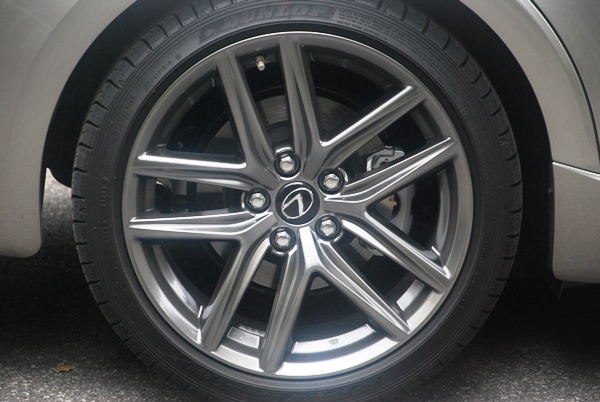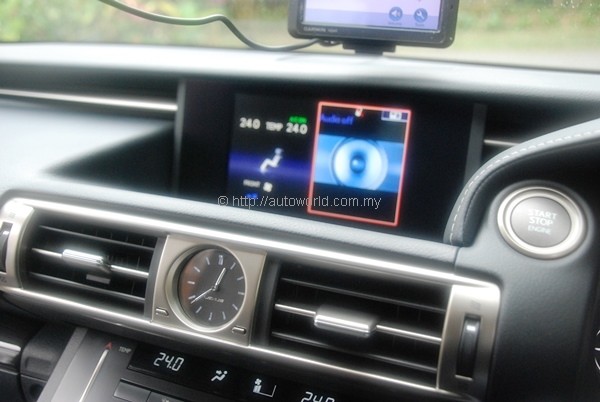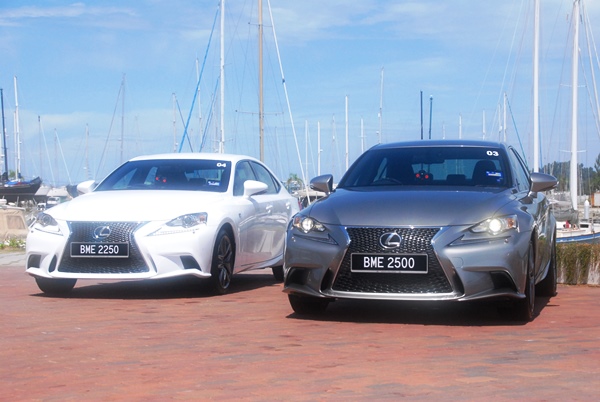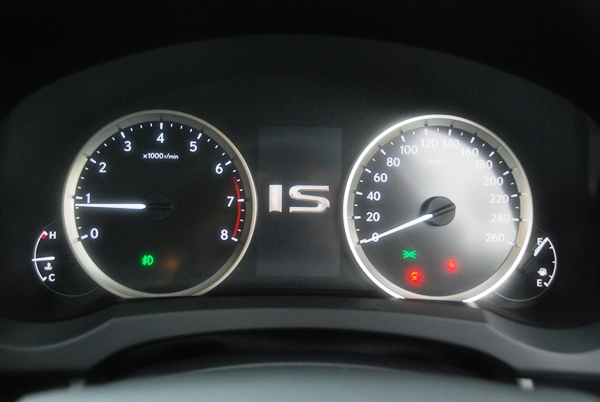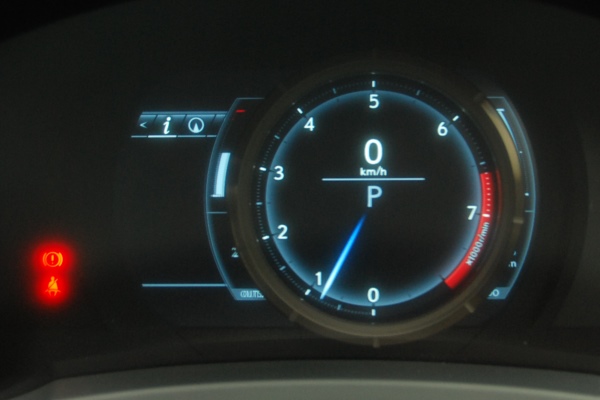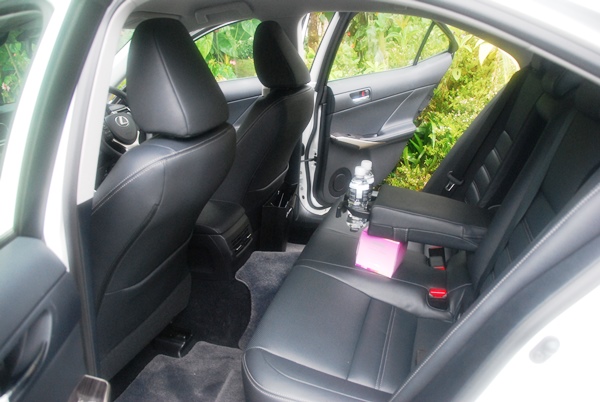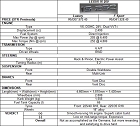Lexus IS 250 Test Drive Review
Midway through only the third decade of its existence, Lexus has successfully carved a well-deserved reputation for crafting some of the finest and most refined automobiles in the business. Yet, these virtues alone are insufficient qualities in today’s market, as the tastes of modern buyers are overwhelmingly skewed towards vehicles that project an aura of sportiness and dynamism.
The Lexus brand is highly respected today, but it has yet to achieve the same aspirational status as its German competitors. People still don’t dream of a Lexus the same way they dream of a BMW or an Audi, and that is something the company is seeking to change with its upcoming generation of products starting with GS introduced two years ago, and followed by the all-new IS launched more recently.
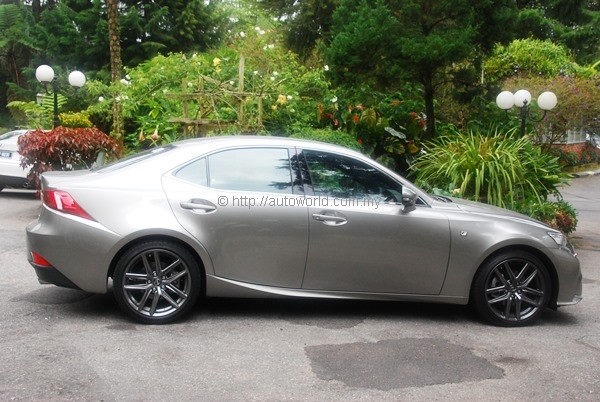 |
| New IS has louder design lines than its predecessor. Time will tell how well it ages. |
Prices & Variants
The new IS range lines up with four variants book-ended by the standard IS 250 at the lower end and the hybrid-powered IS 300h at the other. It is not cheap, however, as the entry model kick starts the range at RM277,190.40 with insurance. The range-topping IS 300h edges perilously close to the 400 mark at RM393,228.40. In comparison, the Audi A4 1.8 TFSI, fully-imported from Europe, can be yours for under RM250k, say nothing about locally-assembled variants of the BMW 3 Series or Mercedes C-Class.
Our review today shall focus on the two variants sitting right in between the standard 250 and the range-topping 300h models. Last week, members of the Malaysian motoring media had the opportunity to test out the IS in its 250 Luxury and 250 F Sport guises back-to-back traveling from the Klang Valley to Lumut on a scenic route via Cameron Highlands and then taking the direct path home on the North-South Highway.
On paper, these two variants appear to be the ones to go for as they boast a significant equipment advantage of the standard model with reverse camera, electric steering adjust, auto-dimming rear view mirrors, and GPS navigation being exclusive to these two variants and the 300h. The F Sport model further adds a Mark Levinson audio system and adaptive dampers. The privilege of adding these goods, however, can dent your wallet a little; both models sport price tags north of RM300k – RM307,970.40 for the Luxury and RM341,928.80 for the F Sport.
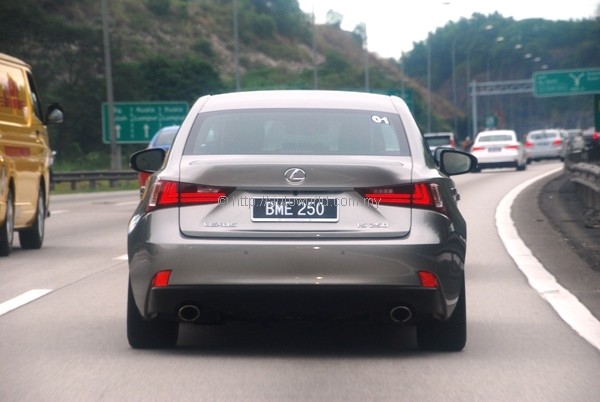 |
| From the rear, there is little differentiating the Luxury and F Sport models. |
Specifications
Whilst the Germans have moved the game on to turbocharged four-cylinder engines that comfortably twist out torque in excess of 250Nm and spread over wide rev ranges, Lexus remains steadfast in offering us a naturally-aspirated six-cylinder engine that was once the norm in this segment, especially if you were looking at models that sported a certain propeller badge.
The cynics will argue that Lexus is behind the times in the engine department, and their arguments are further strengthened by the fact that the IS 250’s engine is carried over from its predecessor, even quoted with the same outputs – 205hp @ 6,400rpm and 252Nm @ 4,800rpm. Hailing from Toyota’s GR engine family, the 2,499cc V6 mill is in actual fact a decently modern engine, sporting aluminium construction and featuring technologies such as direct injection and Dual VVT-i. It operates on a relatively high compression ratio of 12.0, but is said to safely consume RON 95 petrol without knocking.
A six-speed automatic transmission drives the rear wheels, and once again, the IS finds itself disadvantaged on paper with segment rivals offering seven to eight speed transmissions. In truth, we have no issues settling for six – what makes a good transmission less about the number of ratios, but more on the selection of those ratios, and the case of automatics, having a competent control unit to shift into the right gear at the right time.
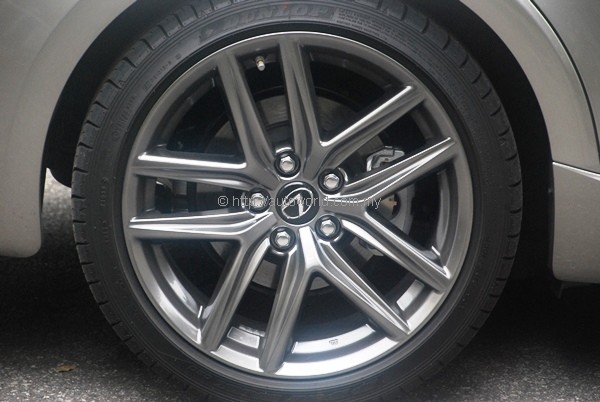 |
| Both the Luxury and F-Sport variants are shod with 18-inch rims, but with different designs. |
Exterior
Although the new IS retains a similar silhouette to its predecessor it also sports a significantly bolder design language. Compared to its clean-looking predecessor, the new one is unafraid to split opinion, eschewing the typical Toyota and Lexus approach of playing it safe. Indeed, it looked as if as the designers were given the specific brief to let their imaginations run wild when they penciled the IS’ lines.
The spindle grille pioneered two years ago by the CT 200h brings the IS in line with the current Lexus corporate look, and flanking it is a pair of uniquely-shaped headlights underlined by LED daytime running lights arranged in a formation that resembles the famous Nike swoosh. I have yet to warm to this design, but my hats are off to Lexus’ team of stylists for having the courage to take this bold direction.
 |
| Spindle grille dominates front fascia. New headlight assembly design is bold. |
Interior
Having paid RM300k for a brand new Lexus, no owner is likely to be amused by a cabin that shamelessly borrows its switchgear from a Corolla, and the good news is that the IS is not guilty of such blatant cost-cutting measures. Material selection and build quality are beyond reproach, both serving to lift the cabin’s overall ambiance a few notches higher to differentiate it from a mass market Toyota.
It is unfortunate, however, that the added style injected to impart a sense of luxury came at the expense of practicality – deployment of small item storage spaces, usually well taken care of in Toyota cabins, is unsatisfactory with insufficient bins available to place our handphones, keys, and parking cards. The centre console only has two cup holders and a lidded box.
 |
| Coolest temperature control interface in the business. End of story. |
Having said that, ergonomics are well-sorted, with all relevant controls placed within easy reach and logically laid out. The Trekkie in me (forward to 1:50 of this video) was thoroughly amused by the touch-operated temperature control switch, which allows you to adjust to your desired temperature simply by just touching the control surface with your finger and sliding it up and down accordingly. Very cool, but wait, there’s more.
The biggest party piece of the interior is perhaps the LFA-inspired LCD screen serving as the instrument panel. In its default mode, the screen displays a computer-generated tachometer flanked by the fuel and temperature gauges at either side and a digital speedometer sitting right in the middle. The CGI tacho is outlined by a physical ring, and at the touch of a button on the steering, the entire ring together with the tacho moves over to the right to enable the entire left half of the instrument panel to display the trip computer menus. This feature is exclusive to the F Sport model, and truth be told, I know I’d be tempted to spend that extra 30-odd grand premium just for the sake of these instruments.
 |
| LFA-inspired instrument cluster is a very neat party trick. Exclusive to F Sport variant. |
Driving Experience
The current President and CEO of Toyota Motor Corporation, Akio Toyoda, is a man with motorsports pedigree, and his efforts to re-inject enthusiasm into the company’s products are well-documented. His handiwork was evident in the Toyota 86 and Lexus GS 250, both vehicles that put wider smiles on our faces than any of their stablemates in recent history. The IS 250 continues that pleasing trend, but that may not be your first impression when you get behind the wheel.
Drivers spoiled by the instant availability of turbocharged mid-range torque of blown German four-pots may find the IS 250’s old-fashioned linear delivery difficult to accustom. Sustaining a spirited run on back roads requires constant boiling of the engine above 5,000rpm and a willingness on the driver’s part to manually take control of gear selection, facilitated by a pair of paddle shifters. The engine is pleasingly willing to indulge in constant redlining, but the transmission’s selection of ratios could be improved – the gap between third and fourth, in particular, can be narrowed.
 |
There is a noticeable difference in dynamics between the Luxury and F Sport variants, but not in the manner which most readers are likely to predict. Despite the F Sport boasting the advantage of adaptive dampers, it is the Luxury version that ultimately proved more satisfying behind the wheel. The more pliant chassis setting of the Luxury model feels more fluent and it consequently flows more fluidly from corner to corner. As far as I’m concerned, the Luxury model is my preferred pick from a dynamic standpoint.
Amazingly, however, even in the midst of hard driving which we subjected our test cars to, the cabin’s environment remained pleasingly refined. It is testament to the overall NVH package that we could carry conversations at normal volume even as the drivers were constantly redlining the engines to keep pace with the tightly-knit convoy, which traveled at a constantly high speed in order to keep with the tight schedule of this particular media drive.
 |
| Rear leg room is decent |
Verdict
The breakneck pace of this media drive gave us very little opportunity to enjoy the IS’ refinement at moderate speeds, and this is something we are looking forward to revisit in an extended test drive at a future date. Indications, however, is that Lexus’ newly-cultivated pursuit of sportiness and dynamism has not come at the expense of the brand’s core values of refinement and an unparalleled ownership experience.
Yet, the IS is unmistakably a car that thrives under hard driving, which is a surprising character trait for a Lexus. It ultimately lacks the dynamic polish of its German rivals, but redeems itself by offering involvement and interaction. It is a bit old school, this car, but satisfyingly so. The IS’ relatively steep price tag will ultimately send many buyers scurrying back to Mercedes and BMW dealerships, but we suppose this will then make it all the more appealing for the select few who want to be exclusive and don’t mind paying for it.
 |











